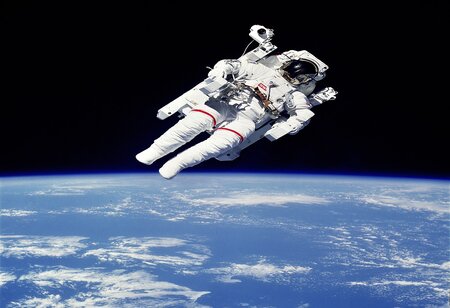Indian Astronauts Set to Train at NASA's Johnson Space Center for Historic ISS Mission
By Consultants Review Team
 In a significant development, Indian astronauts are poised to undertake training at NASA's Johnson Space Center for an upcoming mission to the International Space Station (ISS).
In a significant development, Indian astronauts are poised to undertake training at NASA's Johnson Space Center for an upcoming mission to the International Space Station (ISS).
This mission, led by the United States and scheduled for 2024, marks a pivotal step for India in acquiring practical experience and serves as a precursor to its ambitious 'Gaganyaan' mission—aiming to send Indian astronauts to space and ensure their safe return. The maiden Indian trip to the ISS signifies a landmark four decades after Indian Air Force Pilot and Astronaut Rakesh Sharma's participation in the Soviet Interkosmos programme.
Dr. S. Somanath, the chief of the Indian space agency, ISRO, outlined plans for 2024 as the year of Gaganyaan preparedness following the successful launch mission PSLV-C58/XPoSat. The targeted timeline for the astronaut mission is the end of 2025, with multiple milestones to be achieved. The preliminary steps include three unmanned full-rehearsal flights for the Human Spaceflight mission. Two unmanned missions are slated for 2024, featuring the ISRO-developed humanoid robot 'Vyommitra,' equipped with artificial intelligence and sensors, offering situational awareness during space travel.
In October 2023, ISRO conducted a successful flight test of the Crew Escape System, ensuring the crew capsule's safe ejection in the event of mid-flight failure. Further tests, including helicopter-drop tests to validate parachute systems and a Pad-abort test for emergencies at the launchpad, are scheduled for 2024 and 2025. ISRO's meticulous preparations for the Gaganyaan mission involve routine launch missions of operational rockets (SSLV, PSLV, GSLV, and LVM3) alongside the engineering and development of critical technologies.
The training collaboration with NASA's Johnson Space Center underscores India's commitment to space exploration and scientific advancements. With astronauts from over 20 nations having visited the ISS, India's participation represents a strategic leap in its space capabilities, aligning with the broader goals of expanding scientific knowledge and fostering international collaborations.




